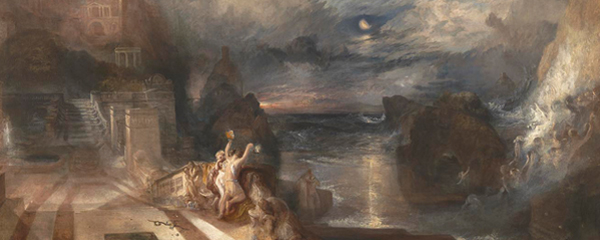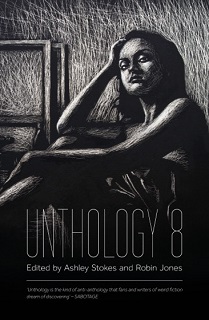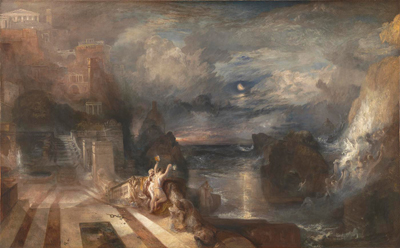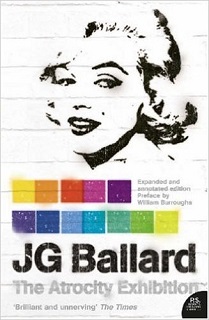
photo © The National Gallery, London 2016
by David Frankel
There is a long history of artists being influenced by fiction and of writers drawing inspiration from artists and their work, so it is perhaps strange that, after twenty years of being an artist, I only recently began to use art as a subject for my fiction. My short story ‘Beneath the Melting Snow’, published in Unthology 8, is a fictional account of the life of the Norwegian painter Edvard Munch. I have been fascinated with Munch since I was a teenager, and it was my interest in his work that led to my earliest forays into ‘serious’ fiction as I tried to track down the books that had influenced his ideas.
 So, in my own life, art and literature have been closely linked from the start. My background as an artist and its influence on my writing is something I’ve often considered. Inevitably, I have spent time thinking about one medium in terms of the other. There are a lot of trite comparisons that could be drawn between painting and the short story – similarities of structure or process – and certainly both have rules whilst still depending heavily on intuition, feeling.
So, in my own life, art and literature have been closely linked from the start. My background as an artist and its influence on my writing is something I’ve often considered. Inevitably, I have spent time thinking about one medium in terms of the other. There are a lot of trite comparisons that could be drawn between painting and the short story – similarities of structure or process – and certainly both have rules whilst still depending heavily on intuition, feeling.
I am interested in the places that art and literature overlap – not so much in subject matter – an artist as a subject for a story is no more or less interesting, in itself, than a story based around a postman – but I am intrigued by the areas in which the ideas behind works of art reflect those behind short stories; the less tangible, psychological links – the things that light up my subconscious when I’m reading a story or looking at a work of art. Trying to unpick these similarities is difficult, but I think, for me, it has something to do with memory and time.
In the National Gallery in London there is a painting by J.M.W. Turner called The Parting of Hero and Leander. It is painted on a grander scale than a lot of his work but, despite its size, most people would pass it by without a second glance. It certainly isn’t one of his better known pictures and, unlike the vibrant landscapes and studies of light for which he is better known, this picture is rather subdued, drab even. But, I’m interested in what it shows…
As the title suggests, it depicts the Greek myth of Hero and Leander, in which the two eponymous lovers are separated by a sea strait. Every night, Hero lights a lamp in her tower to guide Leander as he swims across the strait to reach her. Things go tragically wrong when a storm extinguishes the lamp, and Leander is swept to his death. Finding his drowned body the next day, Hero kills herself.
 What interests me about the picture is that it depicts the whole narrative sequence with each scene happening simultaneously. Each stage of the story – Hero’s signal to Leander, Leander beginning his swim across the sea, the lovers embracing, the sea nymphs conjuring the storm that will kill him – is represented in the same frame, as though the incidents have been painted one over the other. The figures are like ghosts, re-enacting a scene forever, unaware of their future and past selves. Even the buildings have an almost transparent impermanence about them.
What interests me about the picture is that it depicts the whole narrative sequence with each scene happening simultaneously. Each stage of the story – Hero’s signal to Leander, Leander beginning his swim across the sea, the lovers embracing, the sea nymphs conjuring the storm that will kill him – is represented in the same frame, as though the incidents have been painted one over the other. The figures are like ghosts, re-enacting a scene forever, unaware of their future and past selves. Even the buildings have an almost transparent impermanence about them.
This is a convention often used in the depiction of mythical or biblical scenes. We tend to take it for granted when we look at this genre of work, but there is something haunting about this idea: everything happening ‘now’, overlapping. It brings a sense of the inevitable that makes the story more compelling.
There is a sense of this in the fleeting nature of short stories. They can be read in one sitting and therefore the events in them can exist ‘simultaneously’ in the mind of the reader. In any story, we re-shape what we have read in the first part of the story in light of the ending. While this is true of any story, it is more immediate in the short form. This property is a big part of what I enjoy about the short story: the completeness of an idea, a glimpse of a moment that somehow holds within it everything that has happened leading up to it and everything that will happen as a consequence of it.
This relationship to the passing of time, present in both short stories and paintings is strongly linked to memory and how memories are portrayed. These are themes that have formed the basis of much of my work as an artist, and they are now at the core of most of the things I write. I’m fascinated by the way memory (and its mercurial unreliability) shapes us and the way in which we see the world. For me, the act of writing feels very like the act of remembering. Often, of course, it is exactly that, recalling and relating things you have experienced, placing them in a new context, but there is more to it than that. When events, real or imagined, are set down in words, especially within the confines of a short story, their ‘closeness’ works in the same way as our memory. The links are associative rather than strictly chronological.
When I wrote ‘Beneath the Melting Snow’, I wanted to reflect this, allowing two ideas or moments in time to sit together, even though in reality they may be separated by many years, just as Turner did in his depiction of Hero and Leander. In the story, scenes from Munch’s life are assembled in chains of memory, a structure which also reflects his work. Like the vignettes in the story, Munch’s paintings each represent a moment in his life, an event. Many have strongly narrative content. Some of his paintings form an extended story – a group which he called ‘The Frieze of Life’. He intended these pictures to be shown together, in sequence.
In his 1884 essay, ‘The Art of Fiction’, Henry James said: ‘Art lives upon discussion, upon experiment, upon curiosity, upon variety of attempt, upon the exchange of views and the comparison of standpoints.’ The most interesting artists are often those who use their work to test ideas, and here too art shares something important with the short story. Although experimentation with forms and ideas is by no means exclusive to writers of short stories, short pieces are well suited to ‘trying things out’. This is partly because of the very practical reason that a short story represents a smaller commitment of time and resources, but I think there is also a difference in the expectations amongst readers of literary short stories. Their brevity asks more of the reader’s imagination. It also allows the reader to ‘dip into’ a world or a way of thinking that might be unfamiliar or even uncomfortable.
 I think this is what first drew me to the short story. I have always loved stories that had an unusual theme or structure. Some of the first short stories I ‘discovered’ were J.G. Ballard’s early collections, such as The Atrocity Exhibition and Terminal Beach. These collections are full of dystopian themes and characters in psychological decline. Some of the themes and forms of the stories are both confrontational and challenging. The stories in The Atrocity Exhibition (which was packaged as a novel but is actually a string of related short stories) have no beginning or end. They include titles such as ‘The Assassination of John Fitzgerald Kennedy Considered as a Downhill Motor Race’ and ‘Why I Want to Fuck Ronald Reagan’, in which he explores a whole range of modern neurosis, inhabiting them with strange recurring figures such as a version of Marilyn Monroe burnt by radiation, and a nuclear bomber pilot whose face never seems to be quite in focus. Much of the imagery in his stories engages with visual media (TV, advertising etc.), and it’s interesting to note that, around the time he produced these collections, Ballard had himself experimented in visual art exhibitions, using image, film and sculptural installation to accompany his literary work.
I think this is what first drew me to the short story. I have always loved stories that had an unusual theme or structure. Some of the first short stories I ‘discovered’ were J.G. Ballard’s early collections, such as The Atrocity Exhibition and Terminal Beach. These collections are full of dystopian themes and characters in psychological decline. Some of the themes and forms of the stories are both confrontational and challenging. The stories in The Atrocity Exhibition (which was packaged as a novel but is actually a string of related short stories) have no beginning or end. They include titles such as ‘The Assassination of John Fitzgerald Kennedy Considered as a Downhill Motor Race’ and ‘Why I Want to Fuck Ronald Reagan’, in which he explores a whole range of modern neurosis, inhabiting them with strange recurring figures such as a version of Marilyn Monroe burnt by radiation, and a nuclear bomber pilot whose face never seems to be quite in focus. Much of the imagery in his stories engages with visual media (TV, advertising etc.), and it’s interesting to note that, around the time he produced these collections, Ballard had himself experimented in visual art exhibitions, using image, film and sculptural installation to accompany his literary work.
I will never know what themes I would have chosen to write about, or how I would have approached them, if my life had followed a different path from that of an artist. Even though I rarely use art as a subject in itself, my writing space still looks more like a studio than an office, filled with photographs and sketches. Sometimes these images are purely for practical research, visual ‘prompts’ for the stories I’m working on. I’m sometimes amazed by the detail of somebody’s life and relationships that it is possible to infer from the ephemera in a snapshot. Sometimes they are a way of reminding me of a particular atmosphere or idea about a place or object that a scribble post-it note couldn’t capture. Sometimes, the pictures I keep pinned to the wall or in my notebook, like Turner’s painting of Hero and Leander, are there because they switch on that little light bulb in some recess of my subconscious where ideas begin to form stories. As long as that keeps happening, for me, fiction and art will always be bound together.
~
Photograph of ‘The Parting of Hero and Leander’ by JMW Turner © The National Gallery, London 2016

